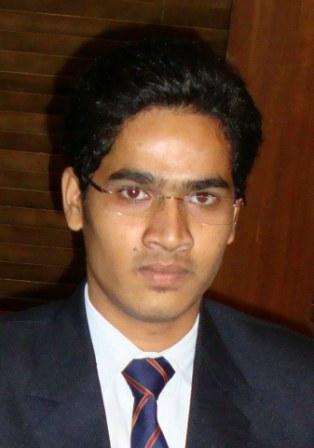Nilesh Kumar
My father was fortunate that there was a Government press just next to his work place. Once a presswala got to know that my father is an ardent reader of Ambedkarite literature. He started delivering Ambedkarite literature to him. When we had all this voluminous literature available at home, my father insisted on me reading only two books vigorously -“Buddha and his Dhamma” and “Annihilation of Caste”. I wondered if he was asking me to read because it’s our ‘religious text’. Around the same time, l also observed that a few of my Hindu friends were Gita readers. That made me take to the two texts recommended by my father. Read them quite a number of times.
The thing I want to imply here is, like the many Buddhist monks who carried Buddhist texts to the east and other places during the Brahmin invasion when they were either being burnt or destroyed by the Brahmins, we were the carriers of these texts..
I see, in both the cases there are similarities. We have a stake in it, we were the soldiers here who carried the movement’s chariot loaded with texts.
…And now we are the battle ground too.
Academia is one of the hegemonic power structures that members of the marginalized have to negotiate while hoping to get an education. In recent times we have seen the academia being very prompt and blatant in coining labels for Dalits. The spectrum of adjectives given, ranges from direct pathologizing to patronizing, sample a few that have originated from these spaces: ‘Intolerant dalits’, ‘Dalit fanatics’, “Dalit Misogynists’, ‘xenophobic Dalits’, and the current label doing the rounds is ‘Dalit radicals’. There are many more in-between and many more to come in future.
The origin, enforcement and rapid dissemination of such terms are always synced with some kind of resistance from Dalits. When Dalits object to a pedagogic misrepresentation of Ambedkar in a NCERT textbook– look for Dalit fanatics, Foot soldiers of identity politics and several more. Now when Dalits question the commercialization of Ambedkar’s seminal text Annihilation of Caste (AoC) by the use of brand names such as Arundhati Roy who have no prior engagement with caste struggles, a new set of labels are afloat: Dalit radicals, Social Media Dalits.
The Dalits as an embattled community is constantly involved in all manner of struggles, a fellow traveler in anti-caste struggles would leave some imprints as an ally. But here is an introducer to Babasaheb Ambedkar’s seminal text, Annihilation of Caste, who in her lifetime has witnessed quite a few momentous anti-caste struggles – for example, the protests against Khairlanji massacre kept Maharashtra burning in a prolonged battle for justice. This massacre and protests did not happen in bygone times but in 2006, when Ms Roy was well known as an activist in the global arena. These protests appear in her introduction to the AoC, but where was her voice during these protests?
As the Chief Minister was addressing a Cabinet meeting a group of about 50 women belonging to Dalit women’s organizations including Urmila Pawar (a Dalit woman intellectual) managed to sneak into the Mantralaya and stormed into the office of the Chief Minister shouting slogans. Bandhs were observed in various towns and big villages in Bhandara and Gondia districts.
Pandharakwada and Yavatmal were also rocked by protests. Over 15, 000 people participated in a protest march in Chandrapur on November 13. Then the protest spread to Amravati. On 14th November a morcha spontaneously planned turned into a mammoth march of 20,000 as the Dalits responded to the call in large numbers
Her phenomenal global reach was never extended towards any Dalit struggles; no article of hers appeared anywhere to show solidarity with the Dalits and draw the world’s attention to them. This lack of engagement in anti-caste struggles forms the core of the questions the Dalits wanted to raise. And in reaction to their critical questions they are being pathologized by the publisher, members of the academia and their friends.

Since the introduction by A. Roy invokes the Khairlanji massacre and the protests by Dalits, I want to register my contempt for the banality exhibited by the author and publisher in using one of the deepest wound to the psyche of the untouchable community to market this book to the white and an apathetic upper caste audience. A. Roy urges readers to read Ambedkar’s works if they have heard about Malala and not Surekha Bhotmange. But beyond that I want to draw attention to how this commercial enterprise is continuing the stigmatization of the Dalit community for the act of protesting, be it for getting water and land rights or for the ‘potential’ to raise questions about the book at a book launch in Hyderabad.
Coming back to the protests against one of human history’s most gruesome gang-rapes and massacres: please remember, the anti-rape protests in Delhi made it to international headlines but the Khairlanji protests were being contained with silence from upper caste women’s organizations, media and with unrelenting violent state reprisal. And it continues to be contained in the tepid prose of A. Roy; she seems oblivious of her role in silencing these protest. Her response to Dalit Camera’s questions about being pathologized for expressing the most mundane of rights at a book launch – to participate in the Q and A section is that the “internet is an insult machine’ where she is the most insulted person. This ought to have reminded the introducer and annotator of Annihilation of Caste of the stigmatization of at least the Khairlanji protestors. Read on:
The police firing and death of one youth in Amravati sparked off further protests and led to an intensification of the agitation in other districts. People have been demanding the resignation of the Home Minister and the Chief Minister. The Home Minister had the gall to state in a function of the police in Pune that the agitation was being conducted in “Hitlerite fashion“. As reports of this speech spread the Home Minister became a target of the people’s protest. Sholapur exploded with protests and the police clamped curfew to stop the agitations. For over four days the curfew was on. Aurangabad went aflame and there too lathi charges, firing in the air could not control the people. Aurangabad was under curfew for several days. So also Pune.
It is always the Dalit who had to pay the price for being assertive, for democratic dissent. I have never seen such caste profiling happening against any upper castes. So, on this moral and ethical ground none of the upper castes have any right to further profile any Dalit and if he or she does it, it is nothing but an act of casteism.
The excluded discriminating against the privileged is a myth
Now let us assume that there is a reverse discrimination happening, like a few Dalits not allowing Savarnas to write on Ambedkar and the freedom of speech of upper castes being circumscribed. A sound and rational mind can easily falsify these arguments. Only if he understands the divisions in the society he lives in, demographically and population wise.
It is widely known fact that Dalits have far less opportunities than others. In spite of all this, I still have never witnessed a Dalit denying space to any Savarna researcher – right from colonial researchers to Indian Savarnas like Srinivas to Beteille, to the second rung Ivy league graduates or so-called intellectuals of today. It is therefore absurd on the part of some of these Savarna researchers to say “subaltern subjectivity can never be excuse enough for intellectual bullying”, referring to the Dalit objections over the book. Neither the upper caste Savarna authors have any organic, experiential, empirical base to claim authority over the subject nor is it ‘bullying’ by Dalits to point that out and say it is ‘epistemic violence’.
Similarly, like white people claiming reverse racist discrimination by African-Americans, it is a logical fallacy to even think that Dalits can discriminate or can ‘stop’ any Savarna Upper Castes from writing on Dalits or Ambedkar; being a minority they can’t raise their voice against the majority on a level platform. Dalits have remained a ‘subject’ of study or research for Savarna Upper Castes. Dalits don’t have the institutional power to oppress Savarna upper castes. An individual Dalit negatively abusing a Savarna can be wrong because of his personal prejudice, but that does not amount to reverse discrimination. Racist and casteist discrimination is enabled by the combination of prejudice and power at all levels. The processes of discrimination is possible only from the privileged and not by the underprivileged.
In the present scenario the stigmatization of Dalits wanting to ask questions at a book launch, or writing their comments on Facebook is not being done by some politician, the internet hindus or some random persons on the internet. It is being enabled by the publisher and participants in the production of the book: that is, academics who have been cited in this book, who are also aggressive promoters of the book, along with their friends are the ones now labeling Dalits for showing the temerity to question, to raise objections. S Anand’s latest offering of labeling Dalits is “Social Media Dalits”.
A question for the publisher Navayana: Why were there no such protests or objections from Dalits for other books that were also introduced by non-Dalits?
To be continued.
~
Please also read other articles on the same issue:
Without Arundhati Roy and Gandhi, the book had its own value: Bojja Tharakam
Caste in the Name of Christ: An angry note on the Syrian Christian Caste: by Nidhin Shobhana
The Not-So-Intimate Enemy: The Loss and Erasure of the Self Under Casteism: by Gee Imaan Semmalar
Flaunting noble intentions, nurturing caste privileges : by Asha Kowtal
The Question of Free Speech: by Vaibhav Wasnik
Arundhati Roy replies to Dalit Camera
An Open Letter to Ms. Arundhati Roy: by Dalit Camera
Vedic Chants for the 21st Century
Arundhati Roy’s ‘Introduction’ to Ambedkar: Inside one Misogynistic & Xenophobic Dalit’s mind: by Anoop Kumar
The Judge, the Jury and the Goddess: by Akshay Pathak
Resisting a messiah: by Anoop Kumar
An Introduction to Anoop Kumar’s “Misogynistic and Xenophobic Rants”: by Vinay Bhat
~~~
Nilesh Kumar is a Ph.D researcher in Tata Institute of Social Sciences, Mumbai, and his main interest is to document the narratives and experiences of discrimination which Dalit students face while pursuing Higher Education.
Cartoon by Unnamati Syama Sundar.









